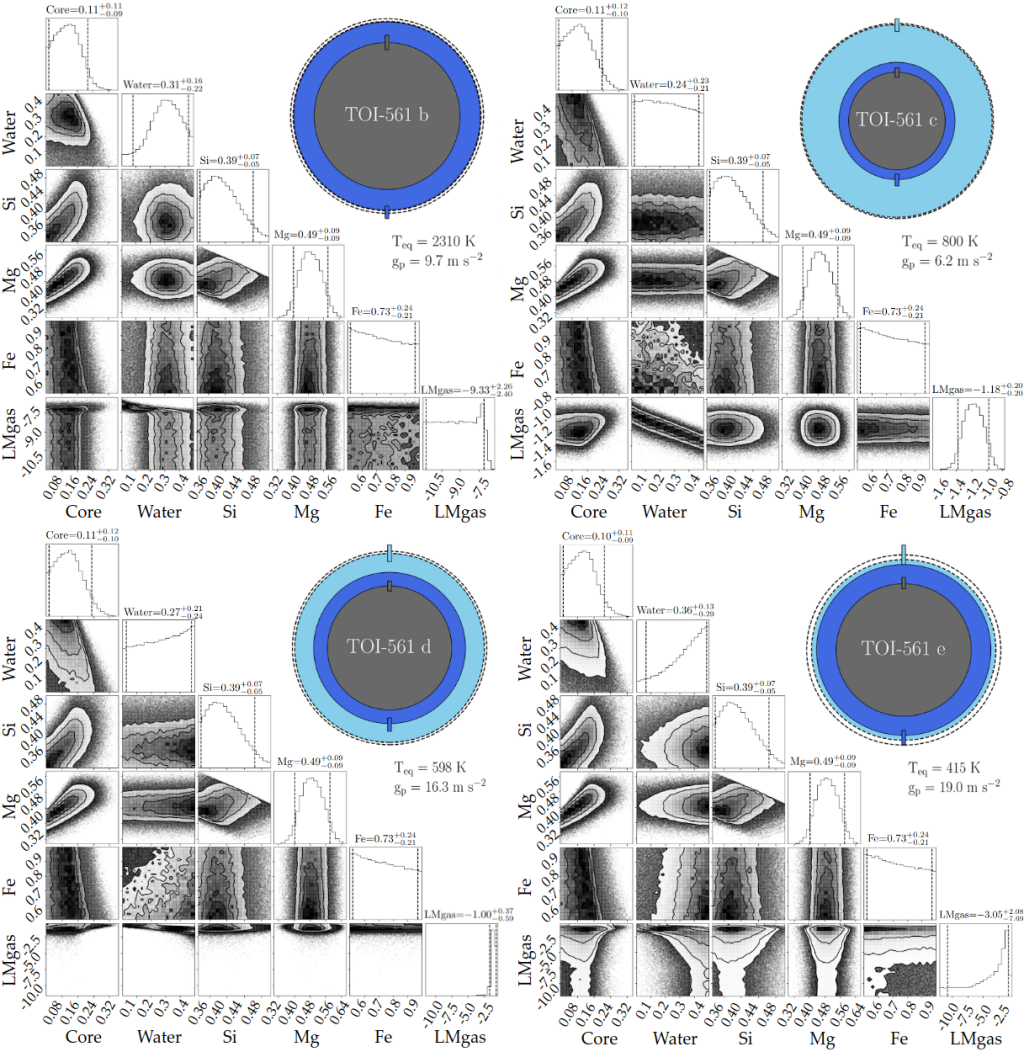HARPS-N contributes with CHEOPS and TESS to investigate the internal structure of the TOI-561 multiplanet system
The discovery of a multiplanetary system around the old, thick disk star TOI-561 was announced last year. New analyses and observations corroborate the 4-planet configuration, confirming the four planetary signals with the use of the global RV dataset, and presenting a second CHEOPS transit of TOI-561 d, which was scheduled thanks to the improvement in the ephemeris derived from the new HARPS-N dataset.
This new study adds to the previously presented datasets 62 new HARPS-N Rvs, a new TESS sector, and three ultra-precise light curves collected with the CHEOPS spacecraft. It confirms the 4-planet configuration for the TOI 561 system, with an ultra-short period (USP) super-Earth (TOI-561 b), and three mini-Neptunes (TOI-561 c, d and e), the two external ones with one TESS transit each due to their periods of 25 and 77 days. Moreover, an additional, long-period signal (> 450 d) in the RVs was identified which could be due to either an external planetary companion or to stellar magnetic activity.
The precise masses and radii obtained for the four planets allowed to conduct interior structure and atmospheric escape modeling. TOI-561 b is confirmed to be the lowest density (ρ = 3.8 g cm−3) USP planet known to date. According to the interior structure modeling, planet b has basically no gas envelope, and it could host a certain amount of water. In contrast, TOI-561 c, d, and e likely retained an H/He envelope, in addition to a possibly large water layer. The inferred planetary compositions (Figure) suggest different atmospheric evolutionary paths, with planets b and c having experienced significant gas loss, and planets d and e showing an atmospheric content consistent with the original one.
Since the announcement in 1995 of the first exoplanet orbiting a Sun-like star, the number of known exoplanets exponentially grew up to more than 4000, especially thanks to dedicated space missions and ground-based surveys. Among the exoplanets having both radius and mass measurements, the ones in well-characterized multiplanetary systems are of particular interest, since they allow for investigation of their formation and evolution processes through comparative planetology. This work demonstrates the key role of high-precision spectrographs such as HARPS-N when working in synergy with space-based facilities.

Figure: Posterior distributions of the main parameters describing the internal structure of the TOI-561 planets. Each corner plot shows the mass fraction of the inner core and of the water layer, the molar fractions of Si and Mg in the mantle, the Fe molar fraction in the inner core, and the mass of gas in logarithmic scale. For each planet, an illustration of the radius fractions of the inner core + mantle (dark gray), water layer (dark blue), and gas envelope (light blue) is shown.
Link to the paper:
https://doi.org/10.1093/stac199

